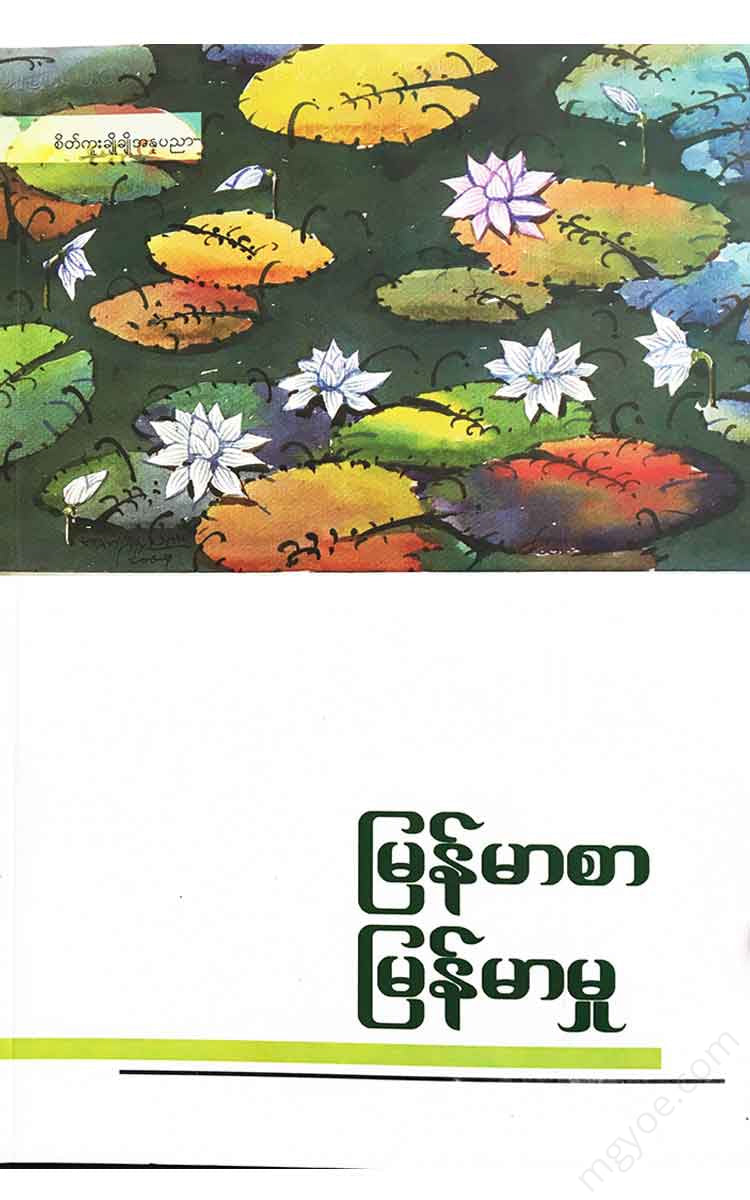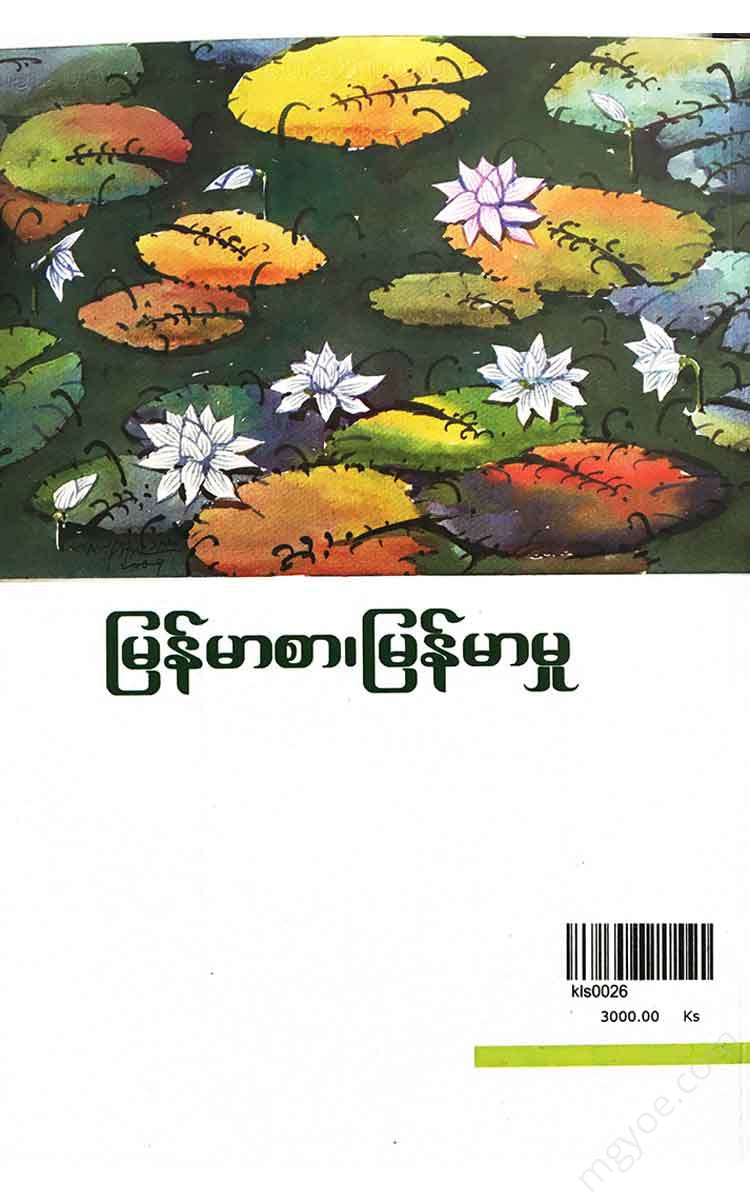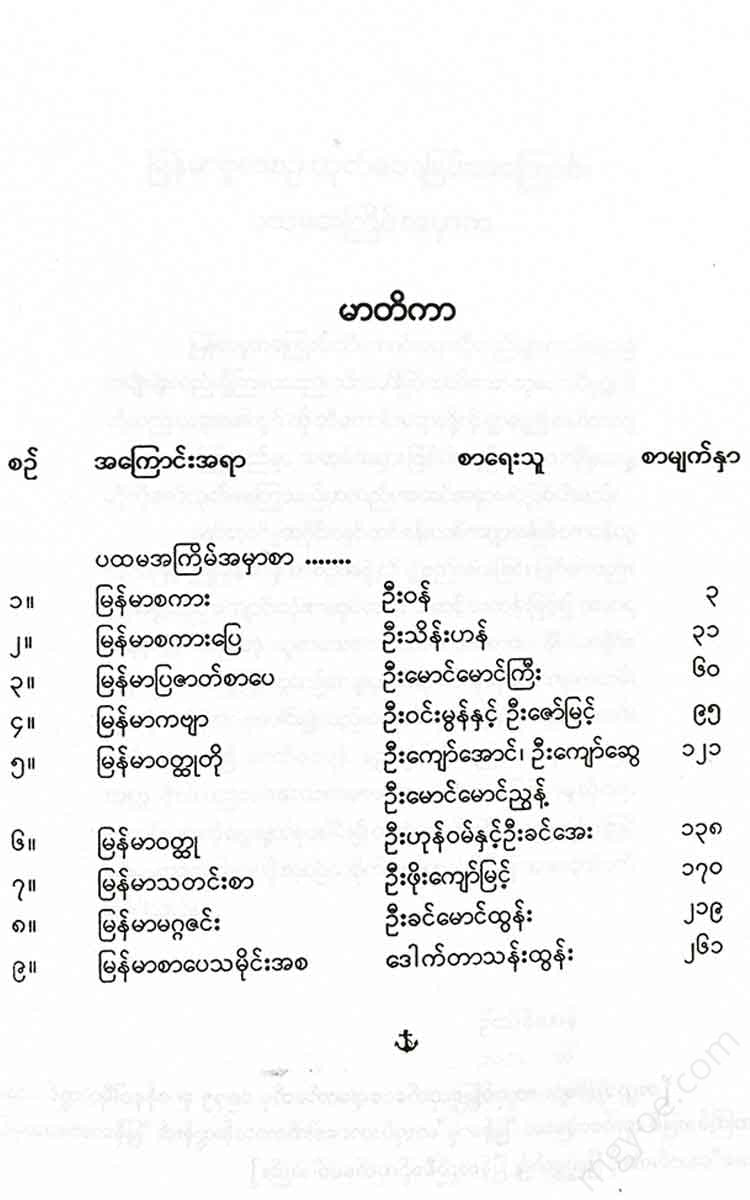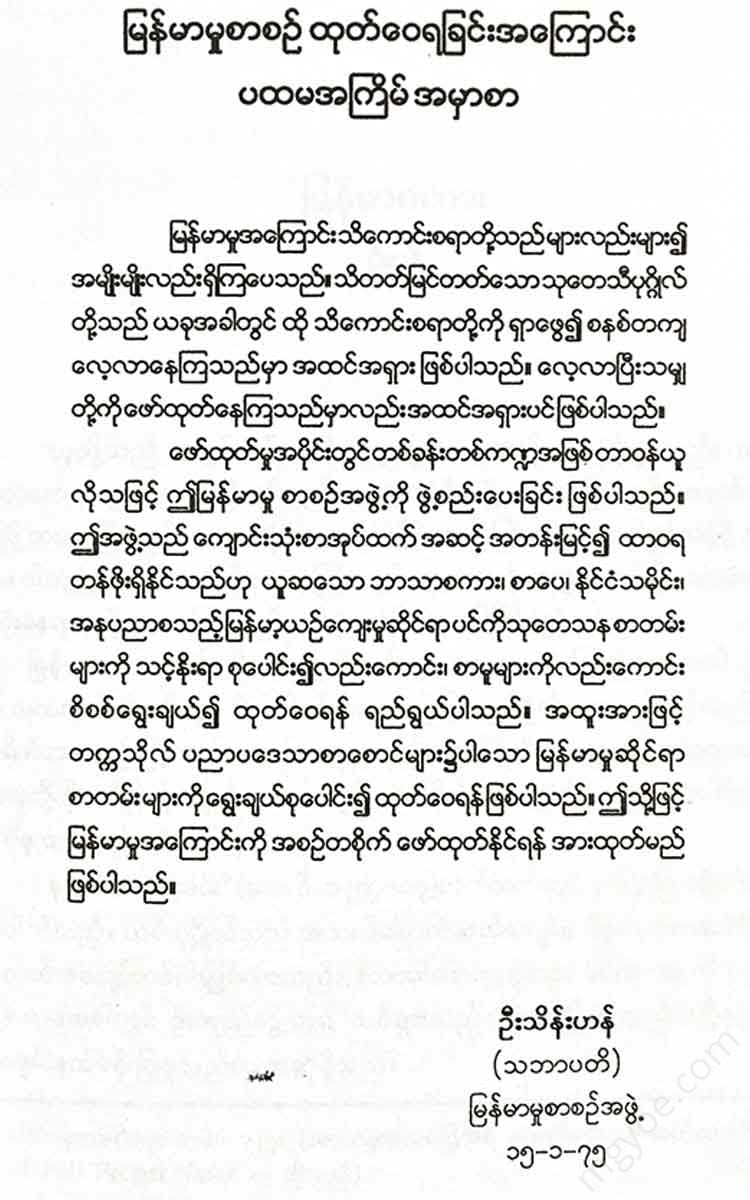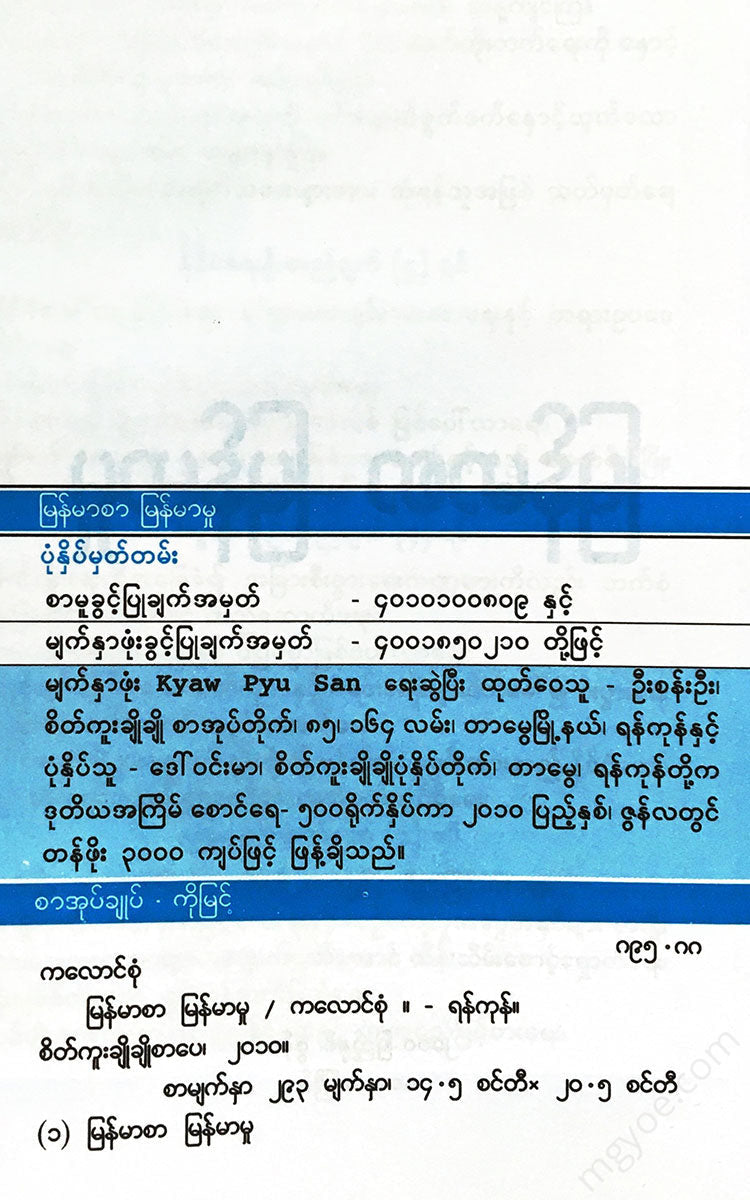စိတ်ကူးချိုချိုစာပေ
Kalong Soen - Burmese language and culture
Kalong Soen - Burmese language and culture
Couldn't load pickup availability
People use language to communicate with each other. Therefore, language skills are necessary. It is important to be clear in pronunciation. It is important to be precise in meaning. It is important to use the right words. It is important to have correct grammar. It is important to have clear sentence structure. (When the words are written down) it is important to have the right spelling. Then the communication will be smooth.
When we study the history of the Burmese language through literary records, we see that the Burmese were interested in the above issues both indirectly and directly. It is not easy to show the involvement found in the indirect way, but it is not difficult to show the interest found in the direct way.
During the reign of King Narathihapatay (1254-87 A.D.), a remarkable person emerged in Bagan. This person, at the age of sixty, began to study the Pitaka literature and became a great scholar. He was also given the title of Disapamokka by the king. He is now known as U Kyi Poew. It is said that U Kyi Poew compiled the great grammar book called Gambiratthagantha.
In compiling this small Pali grammar, U Kyi Poew did not only consider the Pali language. He also studied the Burmese language. Modern grammarians say that suffixes such as “မာင်း, မာင်း” are important in Burmese. U Kyi Poew also seems to have considered this. This is because he has included unique suffixes in his book. He has combined more than twenty verb suffixes and noun suffixes with Pali words to form a verse that is easy to read and memorize. It can be shown as an example -
U Kyi Poew did not say why this basic Burmese grammatical element was included in the Pali grammar. However, when we look at the situation and think about it, we have reason to think that it was included to make it easier for Burmese who studied Pali to translate Pali into Burmese. It is also possible that it was due to the desire to pay attention to these important and useful suffixes in Burmese. Therefore, it seems that he said the following verse:
In other words, it can be considered that he tried to control the Burmese language by adopting the Pali language, which had a compact grammar. In any case, U Kyi Poew's grammatical investigation and analysis of the Burmese language, which had just been written in such an ancient era, is a literary milestone worth recording.
At that time, scholars studied the state of Burmese grammar while studying Pali grammar. Similarly, we can see that they studied the state of Burmese vocabulary while studying Pali dictionaries.
When the Bagan period ended and the Pinya period began, in 1351 AD, King Thihathu, the White Elephant, reigned. During this king's reign, a wise minister named Saturangabala, a native of Pyay, flourished. The minister composed the Ratulanka. This was the end of Burmese dictation. He compiled the Abhidhanappadi Pika, which is often called the "Abhidhanthika".
The Abhidhanthika is a Pali text that explains Pali words in Pali and Sanskrit. However, even though it was written by a Burmese person for Burmese speakers, the author did not neglect Burmese. Some Pali words are not explained in Pali. They are directly translated into Burmese with the same meaning. In terms of form, the two Pali words “லபோவ, லத்திகிகா” mean a bird in Burmese, so they are translated as “்யான விலோன இட்சடே தகுணா”. “சத்தகத்து வித்தித்தித்தித்தித்தித்தியான In this way, the minister, while compiling the Pali dictionary, planted the seeds of a Pali-Burmese dictionary, in other words, a bilingual dictionary. He was not content with just planting the seeds, but had he compiled the dictionary in its entirety, he would now have had the opportunity to study many Burmese words from the Bagan and Pinya periods.
Again, when we study the history of the Burmese alphabet, we find interesting facts. If we study the Burmese inscriptions of the Bagan period, the Pinya period, and the Inwa period, we will find that the scholars of that period were very hesitant about the pronunciation of the letters A, A, and A. It is believed that the Burmese people of that period, especially the Burmese people of the Bagan and Pinya periods, pronounced the letters Yapet, Raka, Yapin, Rari, and A. differently and distinctly. Scholars have noticed that these sounds are still pronounced distinctly and distinctly in the Rakhine and Taungyo languages in the present day. Therefore, it seems that there was no need for the Pinya alphabet books of that period.
